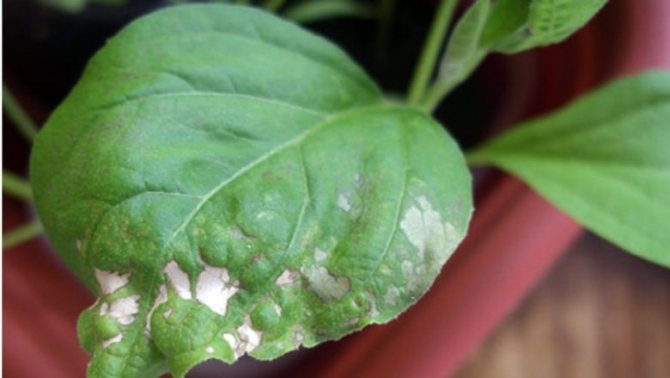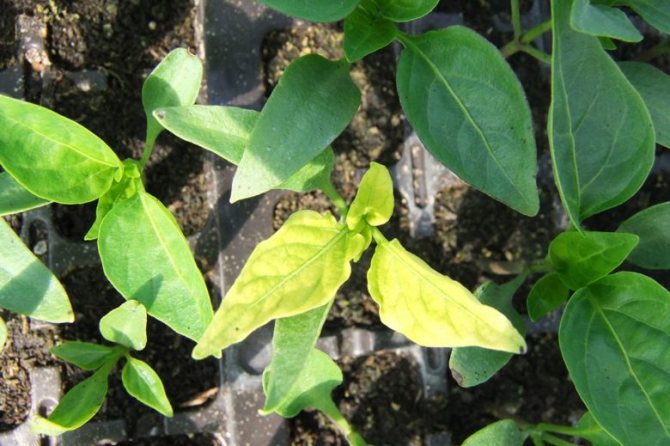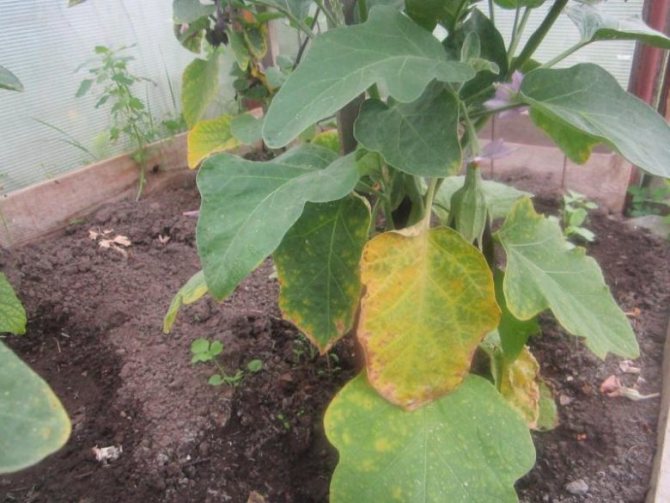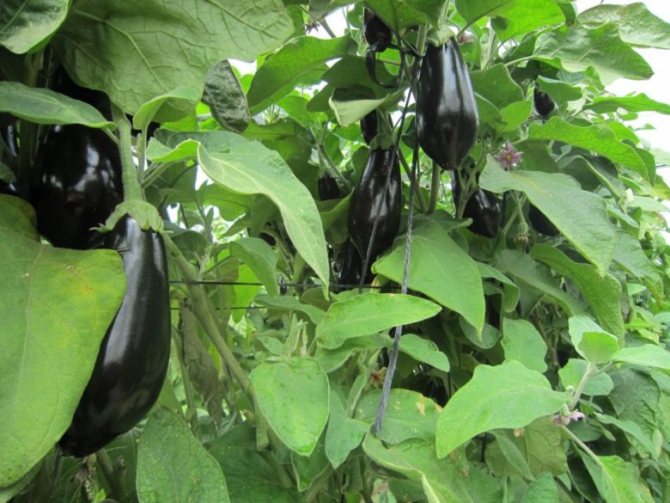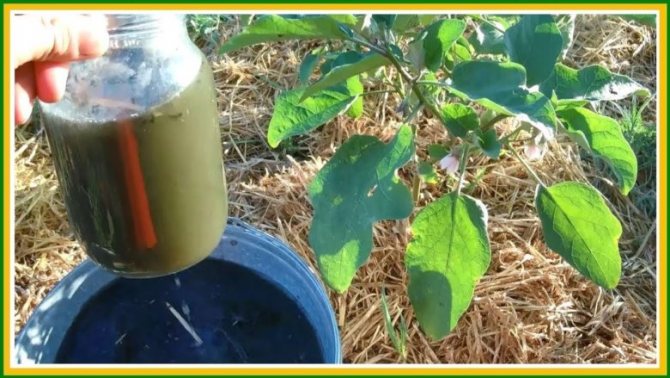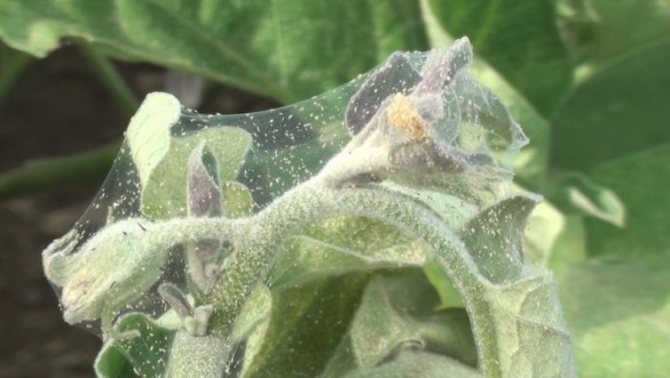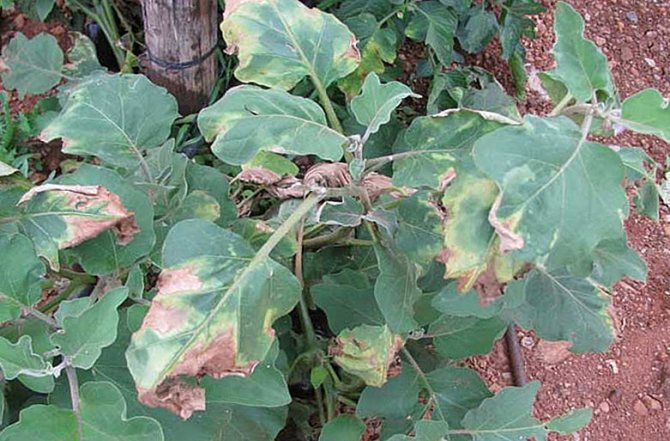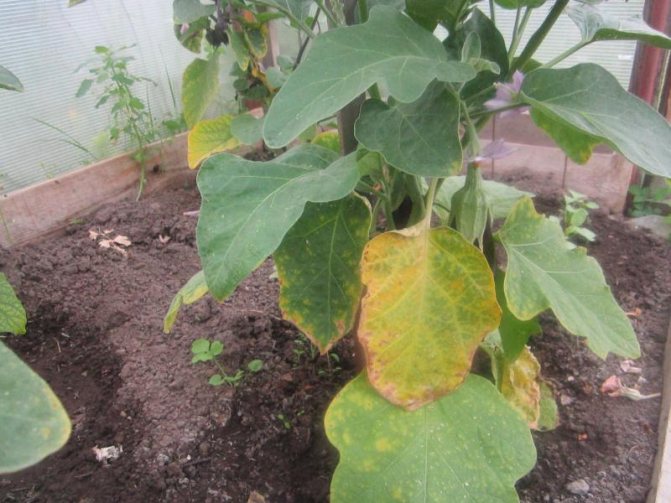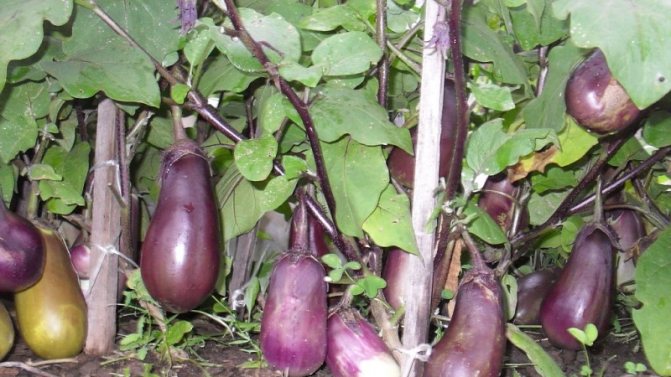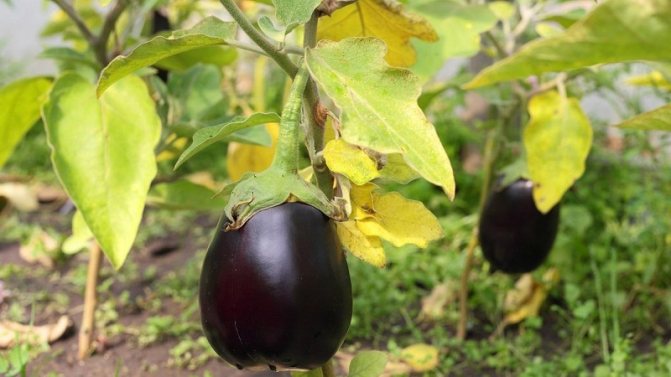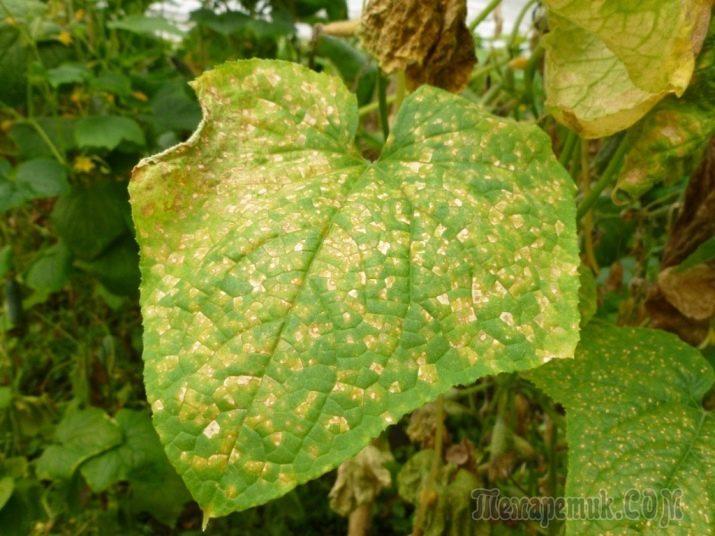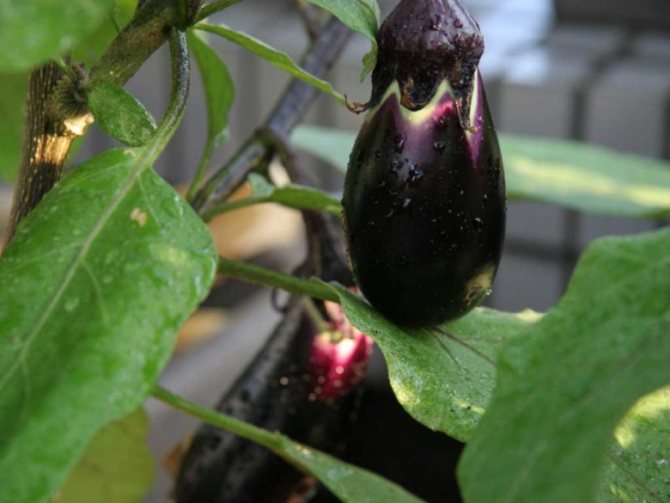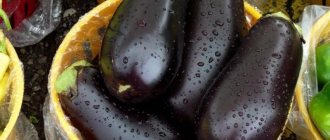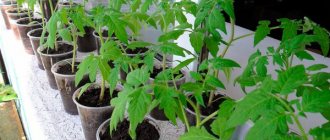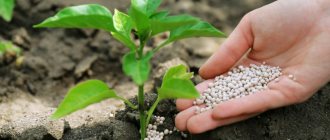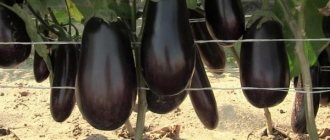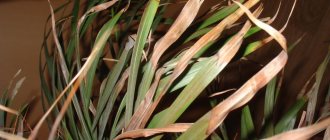Eggplant is a rather demanding culture in terms of growing conditions. To obtain a high-quality harvest, you must follow all the rules of eggplant agricultural technology. If a plant doesn't like something, it signals a change in its appearance. Experienced gardeners, by the slightest signs, can determine what the plant lacks. But for novice vegetable growers it is more difficult, and sometimes some signs baffle them. For example, yellowing of the leaves of eggplant can be associated with both a violation of the cultivation technology and a disease of the plant. Possible reasons why leaves turn yellow on eggplants will be analyzed further.
Features of growing eggplant
If a decision is made to grow a healthy vegetable, then you should first decide on the desired harvest time. In the open field, there are more difficulties during the ripening period of vegetables. Elite varieties are whimsical to conditions and demanding care. If the weather does not work out or knowledge fails, then you can be left without a good result. The yield is influenced by:
Useful articles for gardeners and gardeners
Outdoor eggplant care from planting to harvest
Lunar landing days in July 2020
Mulching tomatoes outdoors
Fighting the Colorado potato beetle on potatoes with folk remedies
- Any fluctuation in ambient temperature. A sharp increase or decrease leads to the fall of flowers and ovaries. Optimum values are considered to be 25 - 27 ° C. Subzero temperatures and long-term drops cause plant death. Below +15 ° С Seeds do not germinate at all.
- Light intensity. Eggplant growth slows down in cloudy weather. Severe sunburns are no less harmful.
- Transplants. Eggplant does not tolerate transplanting well. Any damage to the roots leads to a decrease in survival rate, weakening of the plant.
- Stocking density. Thickened seedlings of eggplant grow slowly, form small fruits.
- Soil composition. It is advisable to plant on light soils, fertilize the vegetable garden well.
But, for novice gardeners and those who are going to grow eggplants for the first time, there are the most unpretentious and productive varieties. Very convenient types that are suitable for greenhouses and open ground at the same time.
General recommendations
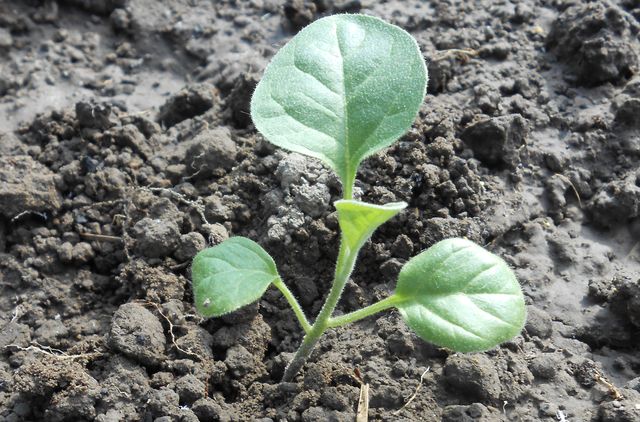
Before the start of a new agricultural season, antiviral drugs and a 0.5% trisodium phosphate solution should be treated with the area where the eggplants were grown (or a greenhouse and a greenhouse) and the crop rotation should be observed.
For seed dressing, you can use the fungicides Maxim or Lamador. These drugs not only fight viruses and bacteria, but also increase the immunity of future plants. Prevention of infection is always more effective than fight against disease, this rule also applies to plants, saving money, nerves, and time.
The most effective scheme for preventing eggplant diseases and yellowing is:
- choose eggplant hybrids that are resistant to viral diseases;
- carry out pre-sowing seed treatment;
- disinfect the soil before planting crops susceptible to disease;
- treat the garden with insecticides and acaricides that act on sucking insects (disease vectors);
- carry out treatment with prophylactic fungicides;
- observe the irrigation regime, monitor the humidity and temperature of the air and soil;
- correctly observe crop rotation on the site and plan the neighborhood of plant species on it.
Yellowing of eggplant leaves due to poor soil
- Excessive moisture. This crop cannot be called drought-resistant: eggplants prefer frequent and abundant watering. But if they constantly grow in puddles (especially with acidified moisture), a dangerous process of decay can begin in the root system.
This trouble has already happened to your plant, if the leaves began to turn yellow not from below, but from the top. Just giving up watering for a couple of days is not enough - the land is already infected with bacteria and / or fungi, so it needs to be mercilessly replaced. And it will be useful to treat the pots with a solution of potassium permanganate. And so that this situation does not repeat itself, choose a "container" for sprouts with holes inside, from which excess moisture flows onto the pallet.
It is important to remember that when watering, moisture should only get into the ground, and not collect in the leaves! Otherwise, they, again, will begin to rot.
- Lack of nitrogen. This microelement is a favorite delicacy of "young" eggplants. When there is no nitrogen, the leaves begin to turn yellow and dry - this time the process starts from the bottom. At the same time, the roots remain healthy. In this case, it is easy to heal the kids by adding the necessary fertilizer to the soil.
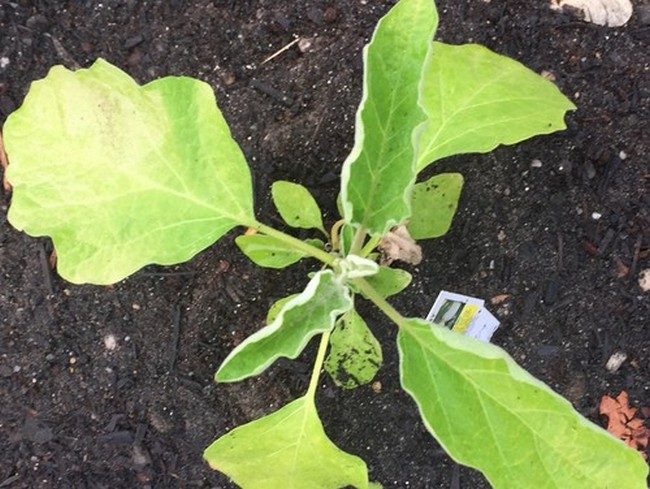

What to do and how to solve the problem
Of course, the methods for solving the problem of wilting leaves on eggplants will be determined by the reason they were caused:
- Dry, too warm air. At high temperatures in the greenhouse, regular ventilation should be carried out, and containers with water should be placed inside the room, due to which moisture will evaporate and humidify the air.
- Top dressing. The lack of mineral and organic fertilizers in the soil can have negative consequences for the growth of eggplant, so fertilizers must be applied regularly, at least 4 times a season: 2 weeks after planting the seedlings, during the flowering period, during fruit formation, a month before harvesting.
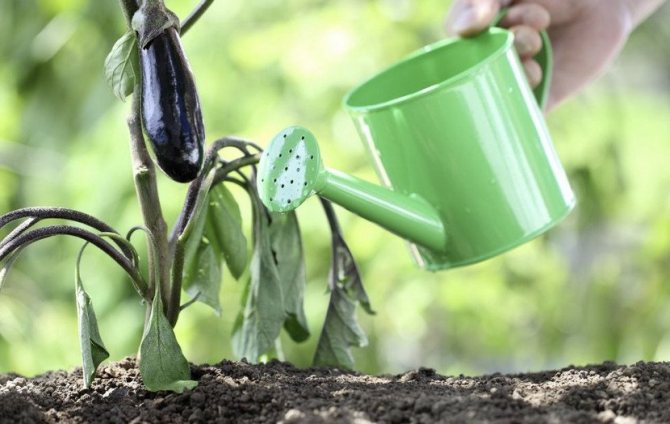

- Crop rotation. In order to prevent the plant from wilting, it is necessary to follow the principles of crop rotation and not plant eggplants in the same area for 2 years in a row. The optimal predecessors for this culture are bell peppers, cabbage, cucumbers.
- Diseases. To prevent the development of various ailments on the plant, prophylactic spraying of the foliage should be carried out using modern biological products. Already diseased bushes should be treated with fungicides, for example, "Fitosporin", "Trichodermin". Experts also recommend, as a prevention of ailments, to disinfect all equipment: shovels, knives, containers for storing seedlings.
- Temperature jumps. It is possible to avoid wilting of the leaves of the culture due to sudden temperature changes if the plant is planted in well-heated soil, with stable daytime air temperatures above 15 ° C.
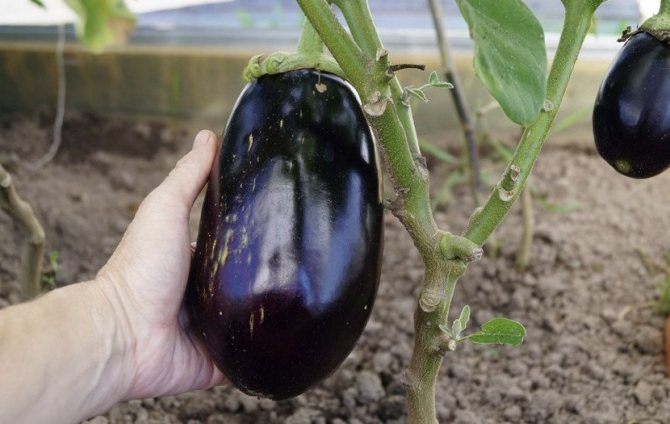

- Sun rays. In order not to expose eggplants to the harmful effects of direct sunlight, seedlings should be planted in well-lit areas, where the sun's rays will reach them only in the morning and evening hours.
- Watering. Experts recommend a complete overhaul of the plant's watering system. Do not use cold water for humidification. The need for irrigation can be determined by the drying of the topsoil. You should not allow prolonged drying of the soil or, conversely, strong waterlogging.
Important! When moistening a crop, it is necessary to use water whose temperature is equal to or a few degrees below the temperature of the soil.
Yellowing of eggplant leaves as a result of disease
If the lower leaves become pale, they gradually begin to turn yellow, wither and fall off, the reason for this is a dangerous fungal disease - fusarium wilt. Without treatment, the shoots will gradually fade too. The cause of the disease is the fungus found on the seeds or in the soil, and hot weather contributes to its active development.As soon as the first signs of the disease were noticed, all massively affected bushes should be removed, and the rest should be treated with Fundazol.
Useful articles for gardeners and gardeners
Fertilizing a tomato: what fertilizers and when to use?
Top dressing of potatoes during flowering
Strawberry jam with whole berries 5 minutes classic recipe
Barren flowers on cucumbers in a greenhouse: what to do?
To prevent the disease, before sowing, it is necessary to soak the seeds in a solution of potassium permanganate, do not plant seedlings in the beds after nightshade crops, but immediately before planting, add Trichodermin to each hole.
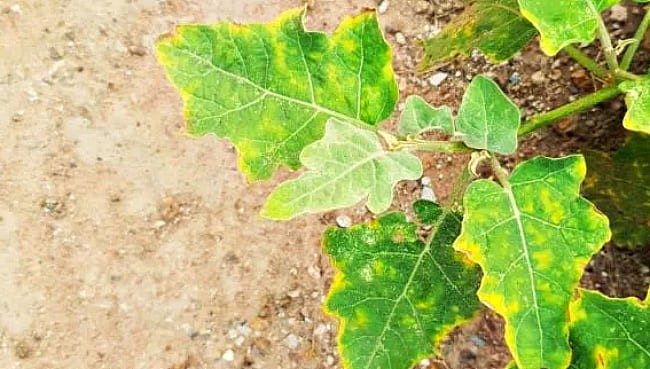

Yellowing of eggplant leaves due to pests
Eggplant leaves in a greenhouse may turn yellow from the effects of pests - spider mites, whiteflies, aphids.
Spider mites in a greenhouse multiply rapidly in dry and too hot air. It gathers under the leaves. Did you notice a cobweb on the leaves of eggplants? Take action. Prevention of the appearance of spider mites - increasing humidity with the help of regular watering and spraying. A good folk remedy: spraying the leaves from below with an infusion of onions, garlic and dandelions with the addition of diluted soap.
Have yellow leaves and flying midges? Perhaps this is a whitefly that feeds on the sap of the plant, and thereby weakens it, bringing it to death. How to get rid of it? First of all, you need to close all the vents in the greenhouse with a net, hang up glue traps. Insecticides also help well: "Fitoferm", "Aktar", from folk remedies - spraying with infusions of garlic and dandelions with laundry soap dissolved in water.
Aphids on the leaves can only be found in large clusters, when the already yellowed eggplant leaves curl and die. If the aphid attacks during the growth period, the eggplants will not bloom and will not tie, because the aphid absorbs the eggplant juices, thereby greatly weakening them. In this case, eggplants from aphids can be treated with "Karbofos", "Keltan", from folk remedies - a solution of tobacco ash.
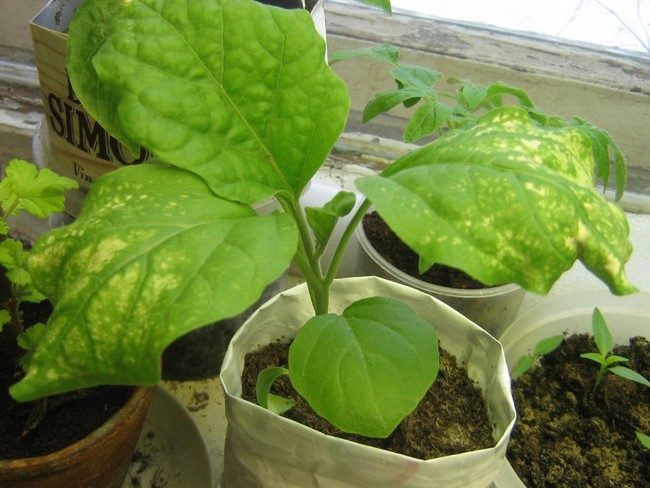

Other reasons
Yellowness on the leaves of eggplant can also appear as a result of:
- a sharp change in temperature (at night - cold, during the day - hot);
- prolonged rainy season;
- lack or excess of lighting;
- improper watering (if drops get on the leaves).
In order for the blue ones to grow well, it is necessary for them to take a bright and protected place from the wind on the site, and also properly care for them.
Yellow eggplant bindings
Zavyazi baklazhanov zhelteyut and opadayut in ocnovnom VARIATIONS nedoctatke vlagi in pochve, VARIATIONS pezkom pepepade tempepatupy vozduxa, VARIATIONS izlishne yapkom colntse in kombinatsii c cuxim vozduxom (cuxovey) DURING nedoctatke azota and mikpoelementov in pochve. The fight against this phenomenon is included in the overcoming of these negative factors, in the organization of shading, protection from the wind, in the organization of dripping during long periods of time. Can be used to cover and protect from dry shelters made of non-woven light materials, which provide moisture, so that the drip is soothing
Why eggplant fruits turn yellow
The fruits of this plant can wither and turn yellow for various reasons:
- defeat by fungal, viral and bacterial infection;
- excess or lack of moisture in the soil;
- sunburn;
- acidification of the soil.
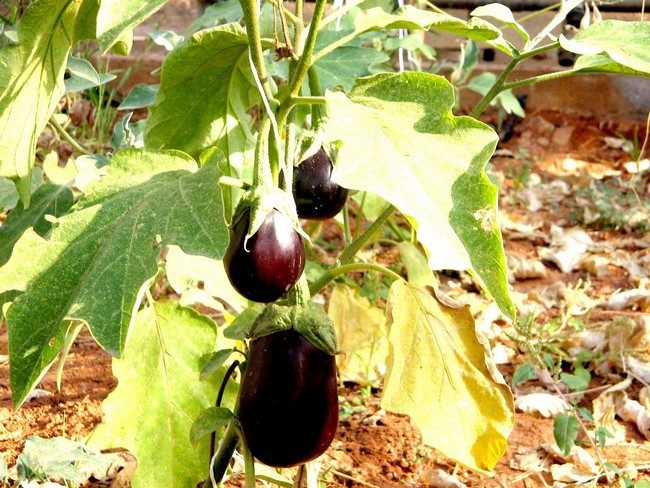

Useful articles for gardeners and gardeners
Sowing lunar calendar for 2020 table
Do-it-yourself flower beds are not like everyone else's interesting photo ideas
Full moon in July 2020 when from what date to what date
When to plant cucumber seeds outdoors
Prevention of yellowing of eggplant leaves
To prevent such troubles with seedlings, it is necessary to choose the correct soil for sowing seeds:
- The earth must contain a balanced amount of trace elements and be rich in nitrogen and potassium.
- Acidic and alkaline earth substrates are not suitable, as is garden soil.
- Even the worst option for planting eggplant seeds can be a soil rich in peat.
- But if there is no way to get ready-made tested soil, then the earth from the wormhole will be an excellent replacement. After all, as has long been known, this is a great start for any plant.
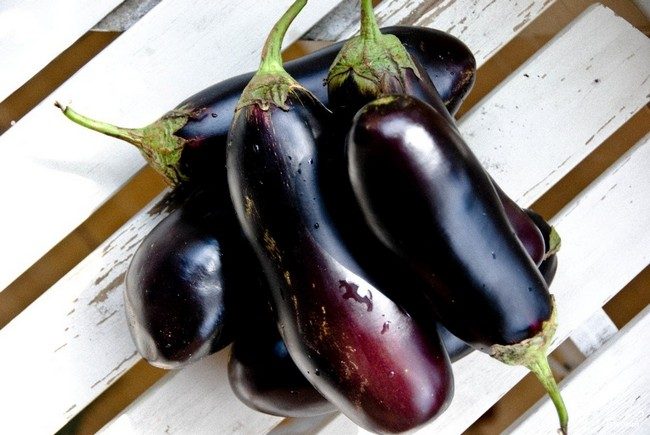

After the eggplants are planted in open ground, after a couple of weeks they should be supplemented with a nitrogen-containing complex fertilizer. This fertilization should be applied several times a season to prevent the plant from not taking this substance.
Nitrogen supplementation should be alternated with feeding with a potassium-containing complex, which also has a positive effect on the plant as a whole and prevents yellowing of the eggplant leaves.
Lack of nutrition
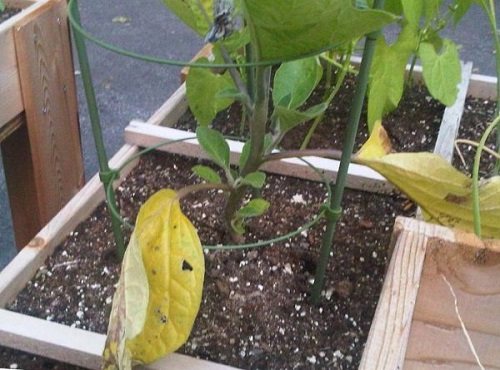

In order for large fruits to ripen on the bushes, eggplants need a full and balanced diet, therefore it is important to feed them regularly and in a timely manner. With a lack of trace elements in the soil, the roots of the plant begin to "pull" them out of the aerial part of the bush, which leads to discoloration of the leaves and their yellow color.
With a lack of nitrogen, the lower leaves turn yellow, and potassium deficiency is manifested by yellowing of the edges of the leaf plate.
To restore the balance of nutrients, eggplants should be fed with complex (but necessarily nitrogen-containing) preparations, or foliar application of potassium fertilizers should be done.

